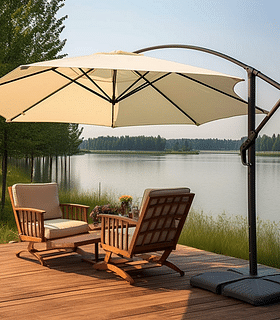How to build a sturdy corrugated metal fence
Learn the step-by-step process of framing a sturdy corrugated metal fence. Get expert tips and guidance on how to build a durable metal fence that will stand the test of time.

Have you ever looked at your backyard and felt like something was missing? Maybe you want a little more privacy, or perhaps you're looking to add a touch of industrial chic to your outdoor space. Well, look no further! One fantastic way to achieve both of these goals is by building a sturdy corrugated metal fence. Not only will it provide you with the privacy you desire, but it will also give your yard a modern and sophisticated look.
In this blog post, I will guide you through the step-by-step process of building your very own corrugated metal fence. Whether you're a seasoned DIY-er or a beginner, no worries! I will explain everything in simple terms, so you can follow along with ease and project confidence. Let's get started and turn your backyard into a stylish oasis!
Understanding the Benefits of a Corrugated Metal Fence
If you're looking for a durable and stylish fencing option, a corrugated metal fence might be just what you need. Corrugated metal fences are made from metal sheets that have been shaped into wavy, ridged patterns. These patterns not only give the fence a unique and modern look, but they also provide added strength and stability.
What is a corrugated metal fence and why should you consider building one?
A corrugated metal fence is a type of fence made from metal sheets that have been bent and shaped into a pattern of alternating ridges and grooves. The result is a fence that is not only visually appealing, but also highly durable and resistant to the elements.
So why should you consider building a corrugated metal fence? Well, there are several benefits to using corrugated metal as a fencing material.
First and foremost, corrugated metal fences are incredibly strong and long-lasting. The ridges and grooves in the metal sheets add structural integrity, making the fence resistant to bending, warping, and other forms of damage. This means that once you install a corrugated metal fence, you can rest easy knowing that it will be able to withstand whatever nature throws its way.
Another advantage of using corrugated metal for fencing is its low maintenance requirements. Unlike other fencing materials, such as wood or vinyl, corrugated metal does not require regular sealing, staining, or painting to keep it looking good. In fact, many people prefer the rustic, weathered look that corrugated metal develops over time.
Corrugated metal fences are also highly versatile and can be used in a variety of settings. Whether you have a modern cityscape or a rural farm, a corrugated metal fence can complement the aesthetic of your property. It can be painted to match your existing color scheme or left in its natural state for a more industrial look.
Planning and Preparation
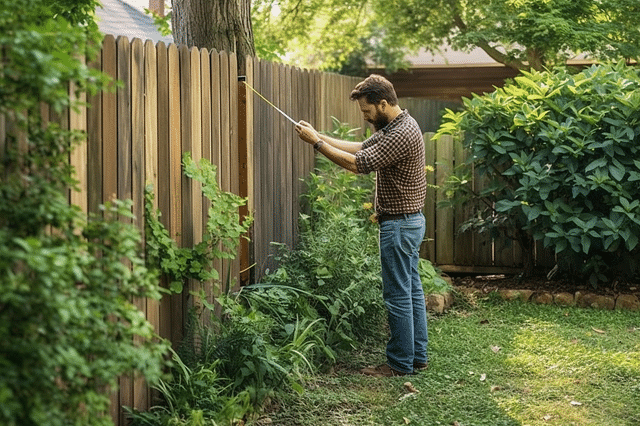
Before you jump into building your corrugated metal fence, it's important to take some time and plan out your project. Effective planning and preparation will help ensure that your fence turns out just the way you envisioned it. In this section, I will discuss three key steps to consider during the planning and preparation phase: determining dimensions and layout, calculating materials needed, and obtaining necessary permits and permissions.
Determining the dimensions and layout of your fence
The first step in planning your corrugated metal fence is to determine the dimensions and layout. Consider the purpose of your fence. Are you looking to create a boundary for your property, add privacy, or enhance the aesthetics of your outdoor space? Knowing the purpose will help you decide the height, width, and overall dimensions of your fence.
Next, evaluate your property and identify any obstacles or existing structures that may affect the placement of your fence. This could include trees, buildings, or uneven terrain. Take accurate measurements of your property boundaries and ensure that your fence layout does not encroach on any boundaries or violate any local regulations.
Consider the design of your fence as well. Will it be a straight line or include curves? Will you have any special features, such as gates or decorative elements? Sketching or using a visual design tool can help you better visualize how your fence will look and ensure that it meets your desired specifications.
Calculating the materials needed for your corrugated metal fence
Once you have determined the dimensions and layout of your fence, the next step is to calculate the materials needed. The two main components of a corrugated metal fence are the metal panels and the supporting posts. Measure the length of each fence panel and determine the number of panels needed based on the desired height and spacing. Consider the width of the panels and adjust your calculations accordingly.
For the supporting posts, calculate the number of posts needed based on the layout of your fence. Typically, posts are placed every 6-8 feet along the fence line. Ensure you have enough posts to support the weight of the panels and provide stability.
In addition to the metal panels and posts, consider other materials such as concrete for setting the posts, fasteners to attach the panels, and any additional accessories or decorative elements you desire. Make a list of all the materials you will need, including the quantities, to ensure you have everything ready when it's time to start building.
Obtaining the necessary permits and permissions
Before you begin construction on your corrugated metal fence, it's important to check with your local municipality or homeowner's association to determine if any permits or permissions are required. Some areas have restrictions on fence height, materials, or placement.
Contact your local building department and inquire about any permits needed for fence construction. They will provide you with the necessary information and guide you through the application process if required.
If you live in a neighborhood with a homeowner's association, review their guidelines and regulations to ensure your planned fence complies with their rules. Obtain any necessary approvals or permissions before proceeding with the construction.
Taking the time to obtain the necessary permits and permissions will help you avoid any legal issues or setbacks during the construction process. Make sure all the required paperwork is in order before you start building your corrugated metal fence.
Gathering the Tools and Materials
Before you start building your corrugated metal fence, it's important to gather all the necessary tools and materials. This way, you'll have everything you need at hand and can complete the project smoothly. In this section, I'll cover the essential tools, selecting the right type and gauge of metal, and other materials needed for the installation process.
Essential tools for building a corrugated metal fence

To build your corrugated metal fence, you'll need a few essential tools. Here are the ones you shouldn't forget:
- Measuring tape: For accurate measurements of the fence dimensions.
- Level: To ensure your fence is straight and level.
- Power drill: To attach the metal panels to the posts.
- Saw: To trim the metal panels to the desired length.
- Screwdriver: To tighten screws and fasten the metal panels.
- Safety gear: Don't forget to wear gloves, safety goggles, and ear protection while working with metal.
With these tools on hand, you'll be well-equipped to start building your corrugated metal fence.
Selecting the right type and gauge of metal for your fence
When it comes to the type and gauge of metal for your corrugated metal fence, there are a few factors to consider. Here are some tips to help you make the right choice:
- Type of metal: Common options for corrugated metal fencing are steel and aluminum. Steel is more durable and typically used for high-security applications, while aluminum is lighter and easier to work with.
- Gauge: The gauge of metal refers to its thickness. The lower the gauge number, the thicker the metal. For residential fences, a gauge of 26 or 29 should be sufficient, while commercial fences might require a thicker gauge, such as 22 or 24.
Consider your specific needs, budget, and desired aesthetic when selecting the type and gauge of metal for your fence.
Other materials you'll need for the installation process
In addition to the essential tools and metal panels, there are a few other materials you'll need for the installation process:
- Fence posts: These provide the structure and support for your corrugated metal fence. Choose sturdy, weather-resistant posts made of wood, metal, or concrete.
- Concrete mix: If you're using wooden or metal posts, you'll need concrete mix to secure them in the ground.
- Fasteners: Use screws or nails specifically designed for securing metal panels to the fence posts.
- Paint or sealant: To protect the metal panels from rust and corrosion, consider applying a coat of paint or sealant. Choose a product that is designed for use on metal and suitable for outdoor applications.
- Gravel or concrete footings: Depending on the soil conditions in your area, you may need to use gravel or concrete footings to provide additional stability for your fence posts.
By gathering these tools and materials before you start building, you'll be well-prepared to tackle the installation process and ensure a successful project.
Preparing the Ground
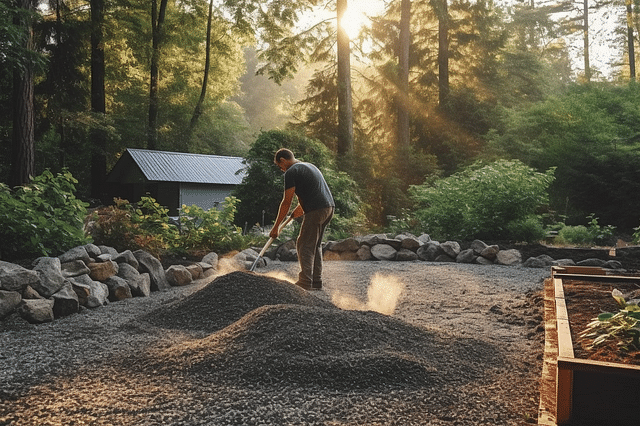
Before you start installing your metal fence, it's important to properly prepare the ground to ensure a solid foundation for your fence. This section will guide you through the necessary steps to get your ground ready for installation.
Clearing the area and removing any existing obstacles
The first step in preparing the ground is to clear the area where you plan to install your metal fence. This means removing any plants, shrubs, or other obstacles that may be in the way. Make sure to also check for underground utilities such as electrical lines or water pipes before digging.
Leveling the ground and marking the fence line
Once the area is cleared, it's time to level the ground. Use a shovel or a rake to remove any bumps or uneven areas. This will ensure that your fence sits straight and secure. It's also important to mark the fence line before proceeding with the installation. This can be done using stakes and string to create a straight line along the perimeter where the fence will be installed.
Choosing the appropriate foundation for your metal fence
The foundation of your metal fence is crucial for its stability and longevity. There are several options to choose from, depending on the type of soil and the specific requirements of your fence. Here are a few common options:
Concrete Footings: This is the most common type of foundation for metal fences. It involves digging holes at regular intervals along the fence line and pouring concrete into them. The fence posts are then set into the concrete footings, providing a solid base.
Helical Piles: If you have loose or sandy soil, helical piles can be a great option. These are screw-like piles that are twisted into the ground using special machinery. They provide excellent stability and are often used in areas with high winds or shifting soil.
Post Anchors: If you are installing a smaller fence, such as a garden fence, post anchors can be a simple and effective option. These are metal brackets that are attached to the bottom of the fence posts and then anchored into the ground using screws or stakes.
Before choosing the foundation for your metal fence, consider factors such as the soil conditions, climate, and the specific requirements of your fence. Consulting with a professional or a local fence supplier can help you make the best choice for your project.
Framing the Fence
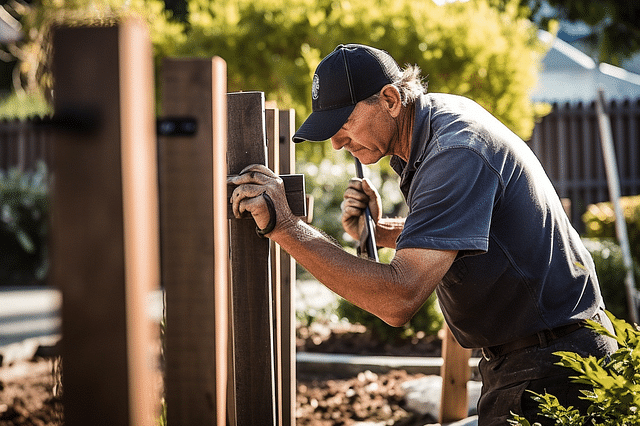
When it comes to building a fence, framing is an essential step that provides stability and support to the overall structure. In this section, I will discuss the different aspects of framing a fence and how to ensure its durability.
Building the frame structure for added stability
The first step in framing a fence is to build the frame structure, which will provide stability and support to the entire fence. The frame can be built using various materials such as wood, metal, or composite materials. Wooden frames can be constructed using sturdy lumber, while metal frames can be assembled using steel or aluminum posts.
To build the frame structure, start by measuring and marking the desired dimensions for the fence. Use a level and string to ensure that the frame is straight and aligned. Then, proceed to install the posts at equal intervals, ensuring that they are firmly secured into the ground. Digging holes and placing the posts in concrete can help to provide additional stability.
Once the posts are installed, attach horizontal rails to create the frame structure. These rails can be attached to the posts using nails or screws. Make sure to measure and cut the rails accurately to ensure a tight and secure fit.
Securing the frame to the ground
To ensure that the frame remains stable and secure, it is essential to secure it to the ground. This can be done by attaching the frame to the posts using brackets or braces. These brackets or braces can be fixed to the posts using screws or nails, ensuring a solid connection.
Alternatively, for added stability, you can consider burying a portion of the frame into the ground. This involves extending the vertical posts beyond ground level and burying them in the soil. This method helps to anchor the fence firmly and prevent it from shifting or tilting over time.
Connecting the frame with cross braces for reinforcement
To reinforce the frame and provide additional strength, it is recommended to connect the frame with cross braces. Cross braces are diagonal supports that help to distribute the weight and pressure evenly across the frame. This prevents sagging and ensures the stability of the fence.
To install cross braces, measure and cut the diagonal pieces accurately. Attach one end of the brace to the top of one post and the other end to the bottom of the adjacent post. Secure the braces using screws or nails, making sure they are firmly in place.
By building a solid frame structure, securing it to the ground, and connecting it with cross braces, you can ensure the stability and durability of your fence. These steps are crucial in framing the fence and creating a strong foundation for the rest of the installation process.
Installing the Corrugated Metal Panels
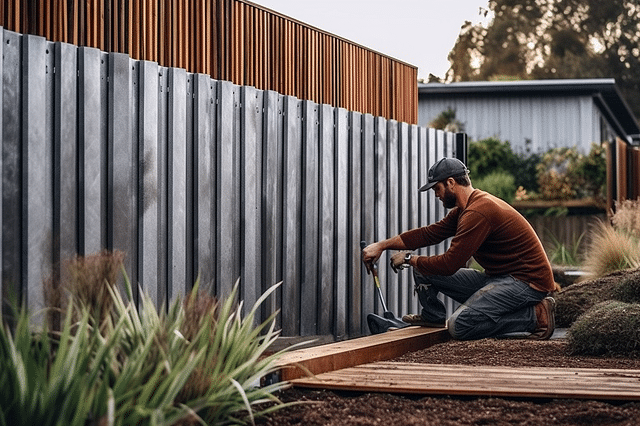
Installing corrugated metal panels is a straightforward process that can greatly enhance the appearance and functionality of your structure. Whether you're covering a roof, a wall, or creating a unique architectural element, here are some key steps to follow for successful installation.
Tips for cutting and shaping the metal panels to fit
Before you begin, it's essential to accurately measure and cut the metal panels to fit your specific area. Here are some tips to help you achieve a precise and professional-looking installation:
Measure twice, cut once: Take precise measurements of the area where the panels will be installed. Double-check your measurements to ensure accuracy before making any cuts.
Use the right tools: Invest in quality metal-cutting tools, such as tin snips or a metal shear, to ensure clean and precise cuts. These tools are designed to cut through metal panels smoothly, resulting in less effort and a neater finish.
Take safety precautions: When cutting the metal panels, wear appropriate safety gear, such as gloves and goggles, to protect yourself from sharp edges and metal shavings. Additionally, work in a well-ventilated area to avoid inhalation of any metal particles.
Use a straightedge or template: To ensure accuracy, use a straightedge or template to guide your cuts. This will help you maintain straight lines and consistent dimensions throughout the installation process.
Attaching the panels securely to the frame
Once you have cut the metal panels to fit, the next step is to securely attach them to the frame of your structure. Here's how to do it:
Choose the right fasteners: Select appropriate fasteners, such as screws or nails, depending on the type of metal panels you are using and the material of your frame. Ensure that the fasteners are designed for outdoor use to prevent corrosion.
Determine the spacing: Consult the manufacturer's instructions or industry guidelines to determine the recommended spacing for securing the panels. This will vary depending on the type and size of the panels you are using. Ensure consistent spacing between panels to achieve a professional-looking result.
Secure the panels: Start at one corner of the frame and, using the chosen fasteners, attach the first panel. Proceed to attach the remaining panels, ensuring they overlap correctly for maximum weather resistance. Install fasteners through the top corrugation of the panels, near the edges, to provide optimal support and stability.
Ensuring proper spacing and alignment of the metal panels
Proper spacing and alignment are critical for the functionality and aesthetic appeal of the corrugated metal panels. Follow these guidelines to ensure a well-aligned and visually pleasing installation:
Account for expansion and contraction: Corrugated metal panels can expand and contract with temperature changes. Leave sufficient space between the panels and the frame to accommodate this movement. Consult the manufacturer's guidelines for the recommended spacing.
Use a level and string line: To guarantee that the panels are installed in a straight line, use a level and a string line as a guide. This will help you maintain proper alignment and avoid any noticeable deviations.
Check for consistency: Periodically check the alignment and spacing as you progress with the installation. Adjust as needed to ensure that the panels are uniformly spaced and aligned throughout the entire project.
By following these guidelines for cutting, attaching, spacing, and aligning your corrugated metal panels, you can achieve a professional-looking installation that enhances the durability and appearance of your structure. Remember to consult the manufacturer's instructions for any specific recommendations pertaining to your panels and frame.
Adding Gates and Finishing Touches

Adding gates and finishing touches to your corrugated metal fence is an essential step to complete the overall look and functionality of your fence. In this section, I will cover various aspects of gate installation, applying a protective coating or finish to the metal, and adding decorative elements or accents to enhance the fence's appearance.
How to install a gate in your corrugated metal fence
Installing a gate in your corrugated metal fence can be a straightforward process when you follow the right steps. Here's a step-by-step guide to help you install a gate:
Measure and mark: Start by measuring the desired width of your gate opening. Mark the spots where the gate posts will be installed.
Dig the post holes: Use a shovel or a post hole digger to dig holes for the gate posts. The depth of the holes will depend on the height and weight of the gate. It's recommended to dig holes at least 24 inches deep for stability.
Install the gate posts: Place the gate posts into the holes and ensure they are level. Use a spirit level to check for accuracy. Fill the holes with concrete mix, following the manufacturer's instructions. Allow the concrete to cure completely before proceeding.
Install the gate: Once the gate posts are securely set, it's time to install the gate. Attach the gate hinges to the gate posts using suitable screws or bolts. Ensure the gate is level and plumb before tightening the hinges.
Secure the gate latch: Install a gate latch on the gate and the adjacent fence post or wall. Make sure the latch is aligned correctly to ensure proper functioning.
Test and make adjustments: Open and close the gate several times to ensure smooth operation. Make any necessary adjustments to the hinges or latch for proper alignment and function.
Remember, it's crucial to follow any local building codes or regulations when installing a gate in your corrugated metal fence. If you're unsure about any aspect of gate installation, consider consulting a professional for assistance.
Applying a protective coating or finish to the metal
Applying a protective coating or finish to your corrugated metal fence can help prolong its lifespan and maintain its aesthetic appeal. Here are some steps to follow when applying a protective coating or finish:
Prepare the surface: Clean the metal surface thoroughly to remove any dirt, debris, or rust. Use a wire brush, sandpaper, or a pressure washer for effective cleaning. Ensure the surface is dry before proceeding.
Choose the right coating or finish: There are various types of coatings or finishes available for metal, such as paint, powder coating, or galvanizing. Select the appropriate option based on your preferences and the specific requirements of your fence.
Apply the coating or finish: Follow the manufacturer's instructions for applying the chosen coating or finish. Use a brush, roller, or sprayer, depending on the recommended application method. Ensure even coverage and apply multiple coats if necessary.
Allow proper curing or drying time: After applying the coating or finish, allow it to cure or dry according to the manufacturer's instructions. Avoid touching or placing objects on the surface until it is fully cured.
Regular maintenance, such as periodic cleaning and touch-ups, will help extend the lifespan and appearance of the protective coating or finish.
Adding decorative elements or accents to enhance the fence's appearance
Adding decorative elements or accents to your corrugated metal fence can elevate its visual appeal and create a personalized touch. Here are some ideas to enhance the appearance of your fence:
Trim and edging: Install decorative trim or edging along the top or bottom of the fence panels. This can add a polished and finished look to your fence.
Gate designs: Explore different gate designs that complement your overall fence style. Consider ornamental metalwork, lattice patterns, or customized gate designs to make a statement.
Planters and climbers: Attach planters or trellises to the fence to allow climbing plants to grow and create a vibrant and natural backdrop. This can add beauty and soften the metal structure of the fence.
Lighting fixtures: Install outdoor lighting fixtures along the fence line to illuminate the fence during the evening hours. This can enhance the ambiance and visibility while providing an inviting atmosphere.
Artwork or murals: Consider incorporating artwork or murals onto your fence panels to showcase creativity and personal expression. This can transform your fence into a unique and eye-catching feature.
Remember to choose decorative elements or accents that are suitable for outdoor environments and can withstand weather conditions. Regularly maintain and clean these additions to ensure they remain in good condition and continue to enhance the appearance of your corrugated metal fence.
Maintenance and Longevity
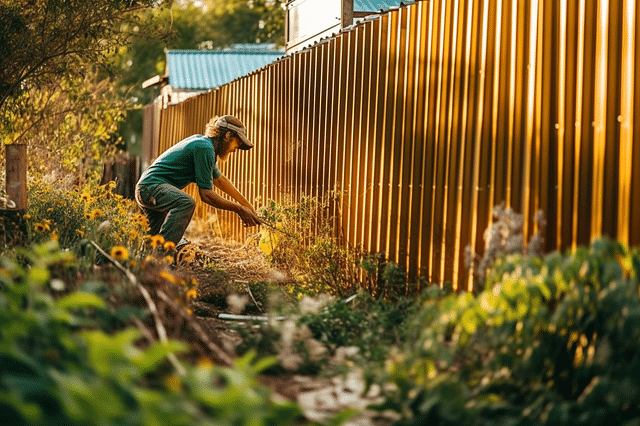
Taking care of your metal fence is important to ensure its longevity and to keep it in good condition. With regular maintenance and proper care, you can keep your metal fence looking great for years to come. In this section, I'll cover some essential tasks for maintaining your metal fence, tips for extending its lifespan, and how to troubleshoot common issues and make necessary repairs.
Regular maintenance tasks to keep your metal fence in good condition
Regular maintenance is key to preserving the appearance and durability of your metal fence. Here are some essential tasks to include in your maintenance routine:
Cleaning: Regularly clean your metal fence to remove dirt, debris, and pollutants that can accumulate over time. Use a mild detergent mixed with water and a soft-bristle brush or sponge to scrub the surface of the fence. Rinse it thoroughly with water to remove any soapy residue.
Inspecting for damage: Take the time to inspect your metal fence for any signs of damage, such as rust, loose screws or bolts, or bent sections. Promptly address these issues to prevent further damage and ensure the structural integrity of the fence.
Painting or refinishing: If your metal fence is painted or coated, periodically inspect the finish for any signs of peeling, cracking, or fading. Touch up any areas that require attention or consider repainting the entire fence to protect it from the elements and maintain its aesthetic appeal.
Checking gate functionality: If your metal fence has a gate, check that it opens and closes smoothly, and that the latch or lock is in proper working condition. Lubricate hinges and hardware as needed to prevent rust and ensure smooth operation.
Extending the lifespan of your corrugated metal fence
While metal fences are known for their durability, there are steps you can take to extend their lifespan even further:
Regular cleaning: As mentioned earlier, keeping your metal fence clean is essential for its longevity. Regularly remove dirt, leaves, and debris from the fence to prevent moisture buildup that can lead to rust and corrosion.
Applying protective coatings: Consider applying a protective coating or sealant to your corrugated metal fence. These coatings act as a barrier, shielding the metal from the elements and preventing rust and corrosion. Consult with a professional or your local hardware store for the best coating options for your specific fence.
Trimming vegetation: Trim any vegetation or overhanging branches that come into contact with your metal fence. Contact with plants can accelerate rusting and damage the surface of the metal. Keeping vegetation away from the fence will help maintain its integrity and prevent unnecessary wear and tear.
Addressing rust promptly: If you notice any signs of rust on your corrugated metal fence, address it promptly. Use a wire brush or sandpaper to remove the rusted areas, then apply a rust-inhibiting primer and touch up with matching paint. This will prevent the rust from spreading and preserve the overall condition of the fence.
Troubleshooting common issues and repairs for metal fences
Even with proper maintenance, metal fences can occasionally encounter issues. Here are some common problems you may encounter and how to troubleshoot and make necessary repairs:
Loose or missing fasteners: Over time, screws, bolts, and other fasteners may become loose or go missing. Periodically inspect your metal fence for any loose or missing fasteners and tighten or replace them as necessary. Using corrosion-resistant fasteners will provide added durability.
Rust spots: If you notice small rust spots on your metal fence, don't panic. These can often be addressed by gently scrubbing the affected area with a wire brush and applying touch-up paint. For larger rusted areas, consider consulting a professional for repairs or replacement.
Bent or damaged sections: Accidents happen, and a bent or damaged section of your metal fence may need attention. Depending on the severity of the damage, you may be able to straighten or repair the section yourself using appropriate tools. In more severe cases, it may be necessary to replace the damaged section.
Remember, if you're unsure about tackling any repairs or maintenance tasks, it's always a good idea to consult a professional. They can assess the condition of your metal fence and provide expert advice or assistance if needed.
Trending products
Shop outdoor accessoriesFrequently asked questions
- What materials do I need to build a sturdy corrugated metal fence?
- To build a sturdy corrugated metal fence, you will need corrugated metal panels, pressure-treated lumber, concrete mix, screws or nails, and basic tools such as a saw, drill, and level.
- How do I frame a corrugated metal fence?
- The process of framing a corrugated metal fence involves measuring and cutting the lumber to create the frame, attaching the frame to the posts, and then attaching the corrugated metal panels to the frame using screws or nails.
- How can I ensure that my corrugated metal fence is durable?
- To ensure the durability of your corrugated metal fence, it is important to use pressure-treated lumber for the frame to protect it from moisture and rot. Additionally, make sure to properly secure the metal panels to the frame to prevent them from bending or coming loose.
- How high should I build my corrugated metal fence?
- The height of your corrugated metal fence will depend on your specific needs and local regulations. However, it is recommended to build a fence that is at least 6 feet high for privacy and security purposes.
- Can I install a corrugated metal fence myself or do I need professional help?
- With some basic DIY skills and the right tools, you can install a corrugated metal fence yourself. However, if you are unsure about any aspect of the process or if you have a large-scale project, it may be a good idea to consult with a professional for guidance.
- How long does it take to build a sturdy corrugated metal fence?
- The time it takes to build a corrugated metal fence will depend on various factors such as the size of the fence, your level of experience, and any assistance you may have. Generally, it can take anywhere from a few days to a couple of weeks to complete the project.
- Can I paint my corrugated metal fence?
- Yes, you can paint your corrugated metal fence to enhance its appearance and provide additional protection against rust. Make sure to use a paint specifically designed for metal surfaces and follow the manufacturer's instructions for the best results.
- How do I maintain a corrugated metal fence?
- To maintain a corrugated metal fence, periodically inspect it for any signs of damage, such as loose panels or rust spots. Repair or replace any damaged parts and consider applying a protective coating or sealant to prevent further rusting.
- Are corrugated metal fences easy to clean?
- Yes, corrugated metal fences are relatively easy to clean. You can use a mild detergent and water solution along with a soft brush or cloth to remove dirt and debris. Avoid using abrasive cleaners or tools that could scratch the metal surface.
- Can a corrugated metal fence withstand weather conditions?
- Yes, a properly built and maintained corrugated metal fence can withstand various weather conditions. The corrugated design enhances the fence's strength and makes it more resistant to wind and other elements. However, it is important to regularly inspect and maintain the fence to ensure its longevity.
Are you looking for more ideas?
Have a look at these other guides about improving your garden and patio to create your dream outdoor space!

Are you looking for more ideas?
-
- Role
- How to anchor a gazebo without drilling and protect your property
- Description
- Discover how to anchor a gazebo without drilling and protect your property. Learn effective methods and tips in our latest blog post. Safeguard your outdoor space now!
-
- Role
- Best Riding Lawn Mowers for Hills: Your Ultimate Guide to Slope-Friendly Mowing
- Description
- Explore our comprehensive guide to the best riding lawn mowers for hills. Get insights into top picks, mowing techniques, and FAQs to maintain a perfect lawn on hilly terrains.
-
- Role
- The Best Snake Repellent: A Comprehensive Review
- Description
- Discover the best snake repellents for your garden in our comprehensive guide. Understand how they work, their safety, and application frequency. Secure your outdoor space from unwanted snake visits today!
-
- Role
- Preventing and Removing Rust from Outdoor Metal Furniture
- Description
- Discover the best zero turn mowers for hilly terrains in our comprehensive review. Find out why these mowers excel on slopes and get safety tips for optimal use. Upgrade your lawn care today!


